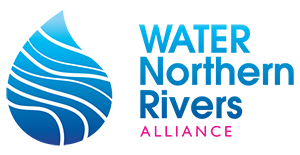Efficiency
Efficiency is the most cost effective option1
Efficiency measures aim to balance demand with existing supply. Typical measures include fixing leaks, replacing older high water use appliances and effective monitoring of usage. Given the waste in our systems, Ballina, for instance, looses about 18% of its water before it reaches our taps, there is plenty of room savings. Keeping demand within supply is a simple and proven step towards water security. For example, Sydney added 950,000 residents in the last 25 years with no increase in water demand.
Watch 6min video by Professor Stuart White (UTS) on Water Efficiency opportunities in the Rous Region.
Efficiency alone could meet our needs until 2044
A robust water efficiency program should have much more ambitious residential, non-residential and infrastructure components than we do now. Stuart White, one Australia’s foremost experts in water efficiency programs, estimates2 that Rous could save as much as 3,344 megalitres per year (ML/a) by 2030 for about 1/9th of the cost that the proposed Dunoon Dam would usefully supply by that time. Efficiency measures alone could meet all of our supply needs to 2044. Professor White’s programme includes:
Residential efficiency measures servicing 5,000 houses a year for 4 years
The residential component of a robust water efficiency program should include:
- Retrofitting indoor plumbing fixtures, taps, shower heads, toilets by qualified plumbers.
- Provide assessment and advice on outdoor use including irrigation and landscaping with discounts for equipment, plants and services.
- Replacing top-loading washing machines with 5 star models.
Non-residential measures targeted by segment
The non-residential component would include targeted initiatives for major, medium and minor users.
- Major, the top 100 users would be given low-cost loans or grants to upgrade equipment.
- Medium, the next 1000 users, schools, shopping centres, restaurants, hairdressers. Advise and assist as with major users but more streamlined to achieve scale.
- Minor, the last 7,000, mainly Rous’ residential customers, managed per the residential program above.
Ambitious infrastructure leakage and pressure management
So far we’ve had a council-by-council approach to managing waste in the delivery network. Some councils have done more than others, but there is still much room for improvement. Australia has the experts to achieve more ambitious goals than Rous County Council has set for itself.
Efficiency measures are the best option environmentally, socially and economically
Efficiency protects the environment
Leaving water in the environment protects conditions for native fish, frogs, water birds and river-dependent plants and animals that rely on different flows to trigger migration and breeding. It also help control weeds and algal blooms:
Efficiency keeps water available for cultural and recreational uses
Keeping water in our rivers and streams improves water quality for uses like fishing, camping and swimming all the way to our beaches. It also benefits stock and irrigation.
Efficiency creates jobs
Direct investment in efficiency measures is money spent in the local economy, employing local plumbers, landscape architects, suppliers and advisers.
Efficiency saves us all money
Using less water means less energy for cleaning and transporting water, saving money for the councils. It lets us defer major infrastructure projects, reducing capital expenditures and their associated risks. For businesses, more efficient usage equals lower costs. For households, more efficient use translates into lower bills. We all save money.
Notes
- Water Services Association of Australia, 2020, “All Options on the Table: Urban water supply options for Australia”.
- For a more detailed of Professor White’s analysis see White, Stuart. 2020, “Rous Water supply augmentation proposal – brief review”. Institute for Sustainable Futures, University of Technology Sydney
